Measuring perceptions of safety and fear of crime in everyday life
Reka Solymosi
Overview
- Measuring fear of crime
- Reframing fear of crime
- Fear experiences in time, place, and time-and-place
- Person-related variables and fear
- Lessons
- Next steps
- Questions, discussion & feedback
Measuring fear of crime
Fear of crime has consequences independent of (recorded) crime.
Measuring fear of crime
Traditionally fear of crime is measured with cross-sectional surveys, reflecting general anxieties and attitudes, not experience.
Measuring fear of crime
Thinking about all types of crime, in general how worried are you about being a victim of crime?
- Very worried
- Fairly worried
- Not very worried
- Not at all worried"
- British Crime Survey/ Crime Survey for England and Wales
Measuring fear of crime
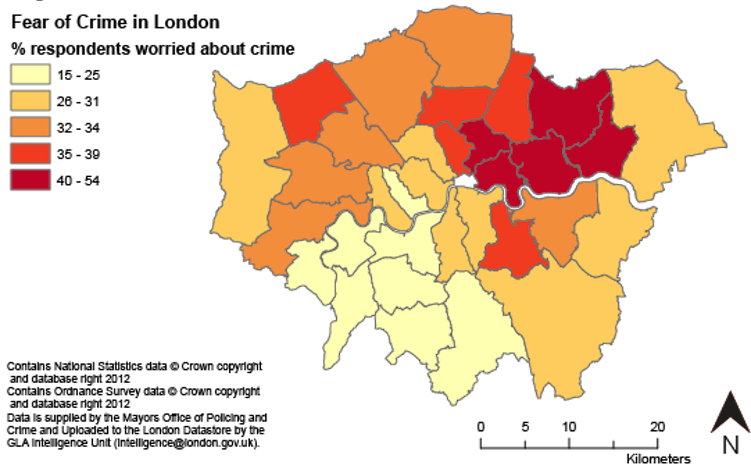
Reframing fear of crime
Approach fear of crime as a specific event.
Reframing fear of crime
New insight for situational interventions to target hot spots as they move about in place and time.
Reframing fear of crime
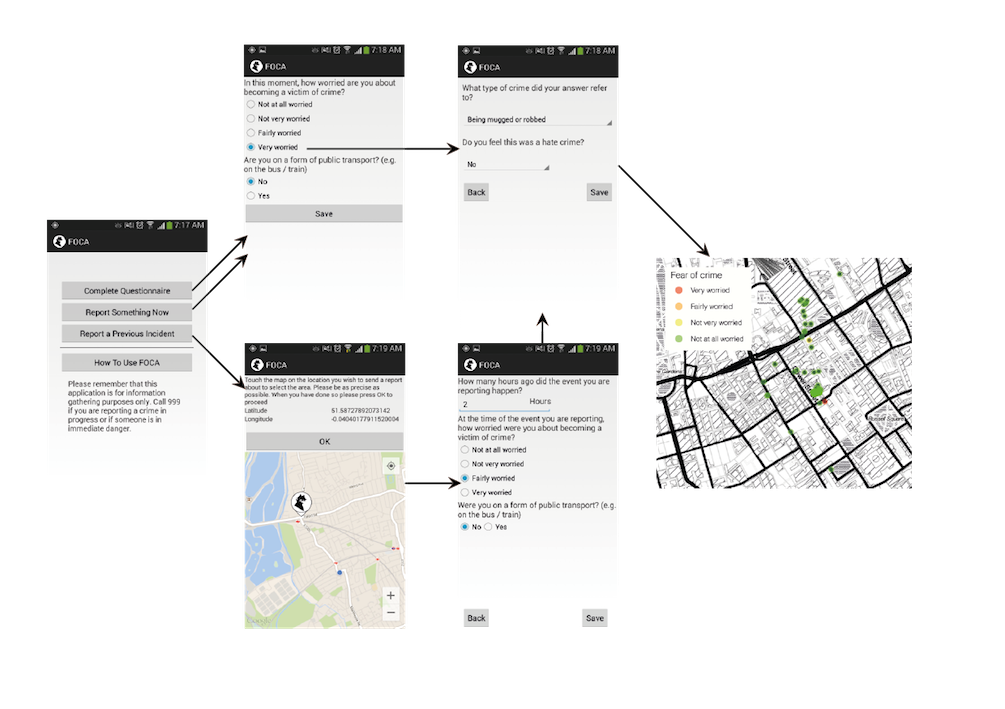
Fear experiences over time

Fear Experiences in Place
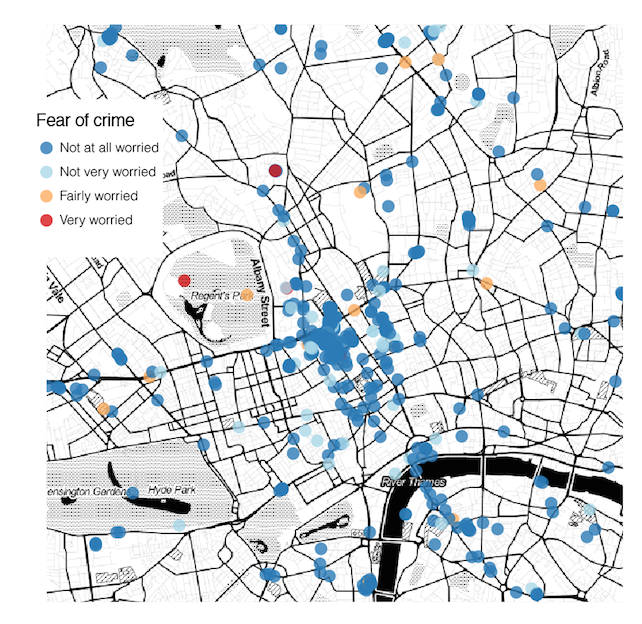
Fear experiences in time and place
By hour of day
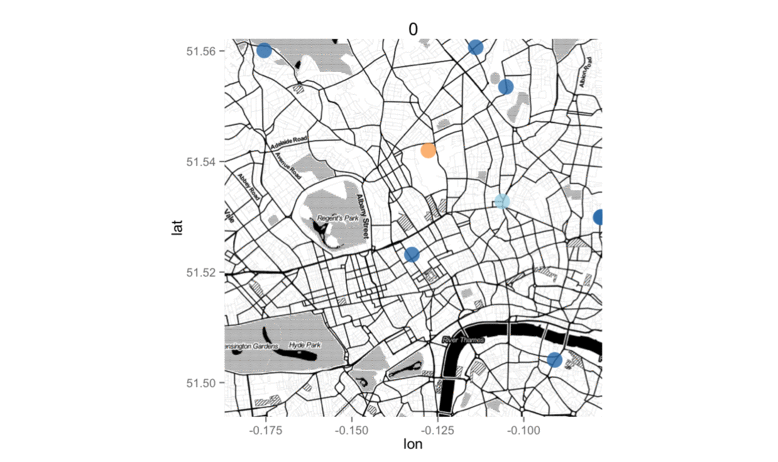
Fear experiences in time and place
By day of week
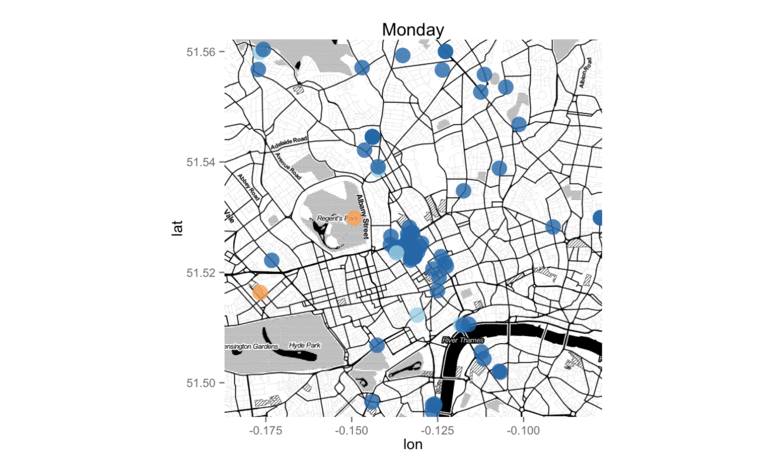
Personal variables and fear
Traditionally present gender difference in fear
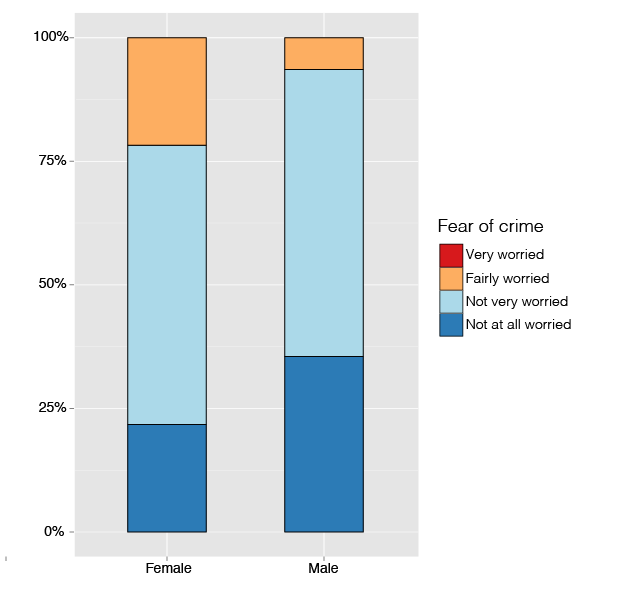
Personal variables and fear
Not so much in longitudinal experience
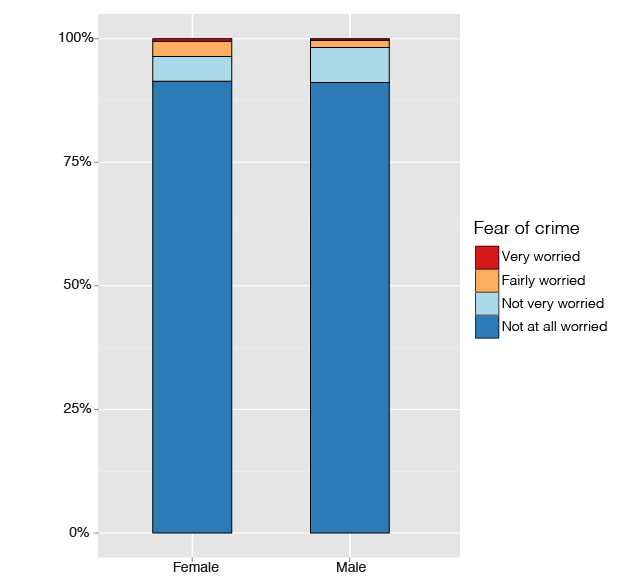
Lessons Learned
- Fear of crime as everyday experience is dynamic and it varies with context.
- Sparse data, how to encourage uptake?
- Bias of sample
- Variation in reporting behaviour
- Psychological distance - reminders increase fear?
Next steps
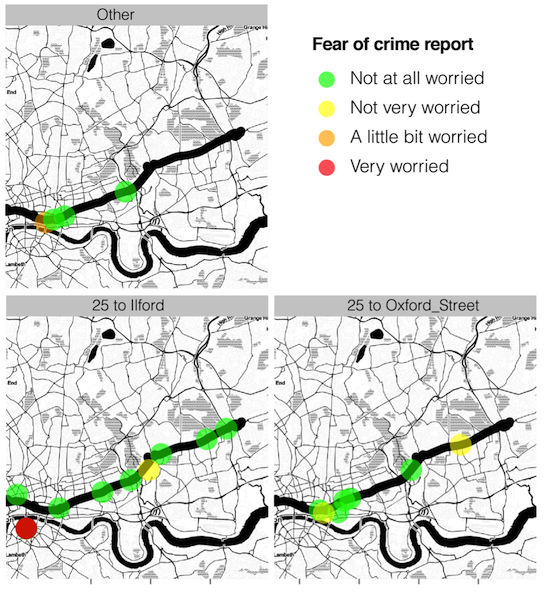
Thank you
Questions, comments, advice?
r.solymosi.11@ucl.ac.uk